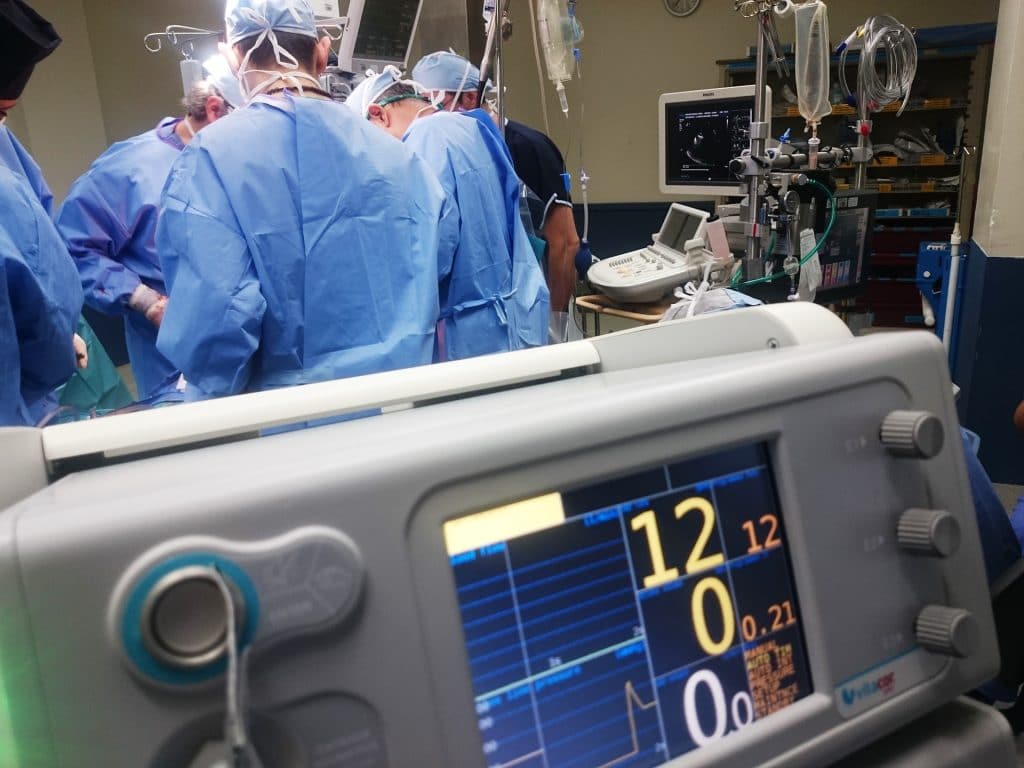Femur Fracture: Causes, Symptoms, and Treatment
The femur — commonly called the thighbone — extends from your pelvis to your knees, making it the longest bone in your body. Because it is also the body’s strongest bone, fracturing it requires significant force and is a serious injury.
If you have symptoms of a broken femur, seek emergency medical treatment.
What are the Symptoms of a Broken Femur?
The pain resulting from a femur fracture is usually substantial and immediate. You may not be able to put any weight on the injured leg. The leg may appear shorter or visibly deformed.
Symptoms of a fractured femur may include:
- Instant, severe pain
- Trouble moving the injured leg
- Inability to stand or walk
- Bruising, pain, and/or swelling in the injured area
- Deformity of the injured area
- Thigh bone pushing out through the skin

How Do You Break Your Femur?
High-impact events like car accidents or falls from great heights are the most common causes of femur fractures. They may also happen as a result of a significant blow while playing sports.
In the elderly, osteoporosis increases the risk of breaking one’s femur. Interestingly, a “hip fracture” is commonly a femur fracture — a break occurring at the proximal end of the femur, near the hip socket.
Are There Different Kinds of Broken Femurs?
Femur fractures are classified by location, breakage pattern, and whether or not surrounding skin and muscle are damaged.
Where Can a Femur Break?
- Transverse fracture: A break running horizontally across the bone
- Oblique fracture: A break that runs at an angle across the bone
- Spiral fracture: A break that encircles the bone
- Comminuted fracture: A break fracturing the bone into three or more pieces
What is an Open Femur Fracture?
An open or compound fracture is a break where the bone protrudes through the skin or when there’s a wound that reaches down to the broken bone.
These types of fractures are more complicated and serious to treat because of the increased damage to the surrounding muscles, tendons, and ligaments and the increased risk of infection. You will take antibiotics to reduce the risk of infection. The injured tissues and bone will be cleaned during surgery.
Can You Get a Stress Fracture in Your Femur?
While most femur fractures are serious and require surgery, a less serious type of fracture called a stress fracture may heal on its own.
Stress fractures are partial or complete breaks resulting from repetitive stress and overuse. Stress fractures in the femur are relatively uncommon, constituting “…only 2.8 – 7% of all sport-related stress fractures.”
How is a Fractured Femur Diagnosed?
Emergency medical professionals and your treating orthopedic specialist use physical examination, x-ray imaging, and possibly an MRI or CT scan to determine the extent and location of the break.
Once located and evaluated, femur fractures commonly require immediate surgical treatment, generally within 24 – 48 hours of the offending event.
As you await surgery, your leg will likely be placed in a long-leg split or in traction to stabilize and support it. Traction elevates your leg via pulleys and counterweights, keeping it straight and helping to alleviate pain.
Are Femur Fractures Always Treated With Surgery?

A majority of fractured femurs require surgery. Many orthopedic specialists use methods of internal fixation to physically reconnect your broken bone.
One common method is called intramedullary nailing. A metal rod is inserted at the hip or knee, passed through the fractured area, and screwed into place. This holds your broken bone in place while it heals and reconnects.
If the fracture includes the hip or knee joint, intramedullary nailing is not possible. In this case, an orthopedic surgeon may reposition and support the bone by screwing metal plates to the bone’s outer surface.
In cases with additional serious injuries, temporary measures stabilize the leg before a more permanent surgical treatment. One such measure is external fixation, in which a rod is attached externally to the body to hold the broken bone in alignment. This procedure gives the body time to stabilize and heal in preparation for the longer final surgery.
Are There Any Non-Surgical Treatments for a Broken Femur?
Most femur fractures require surgery, but specialists can sometimes realign the broken bone from outside the body, which can be a less invasive type of surgery.
This process is called a closed reduction and is usually followed by casting the leg during healing. These approaches are most common for the very young or medically vulnerable.
How Long Does a Femur Fracture Take to Heal?
Healing typically takes 4 – 6 months, though it may take even longer if skin, tendons, or muscles were damaged or if the broken bone fractured into several pieces.
Studies have shown that the use of tobacco products also negatively impacts healing time and is more likely to result in both nonunion (lack of healing) and surgical site infection.
You may require short-term use of pain medication during the initial phase of your healing. Work with your specialist to make a healthy and responsible choice regarding the use of any pain killers in the opioid family. While effective, opioids are narcotics and can be addictive. Talk to your doctor if your pain levels aren’t decreasing within a few days of surgical repair.
Your orthopedic specialist will likely encourage you to begin putting weight on your leg as soon as it is comfortable, aided by crutches, a walker, or a cane. Be sure to follow their instructions to avoid complications. Also, work with your physical therapist to regain strength and range of motion.
If you are experiencing leg or hip pain and would like to speak to an orthopedic specialist, please contact us. We will be happy to answer your questions.
Leave a Reply